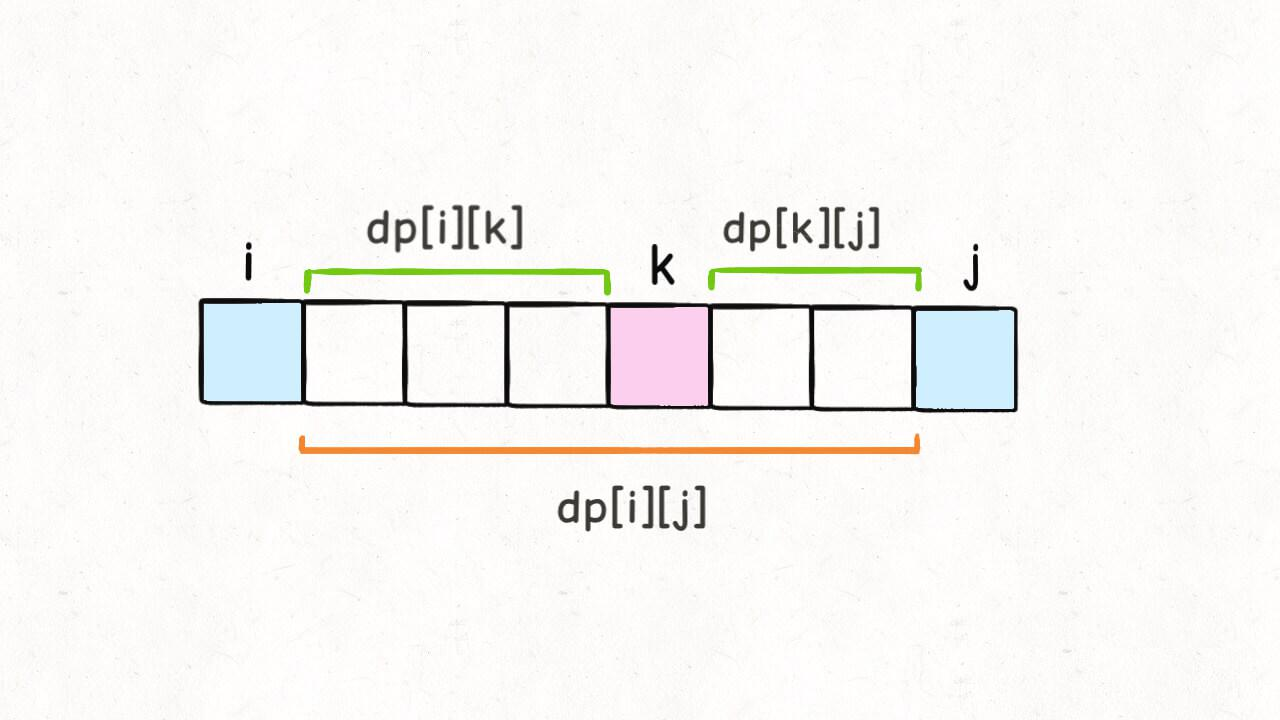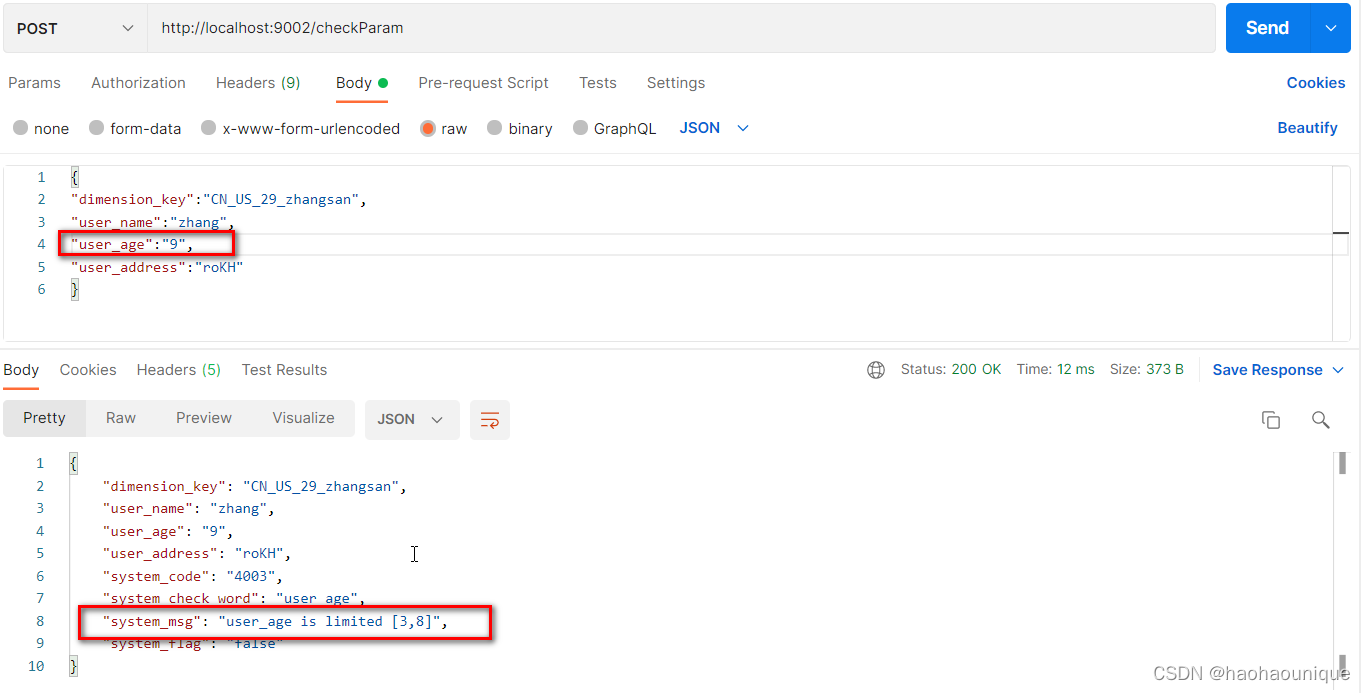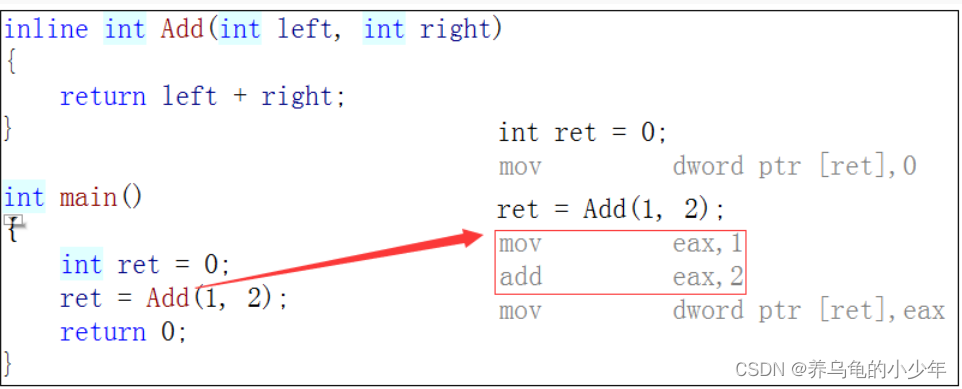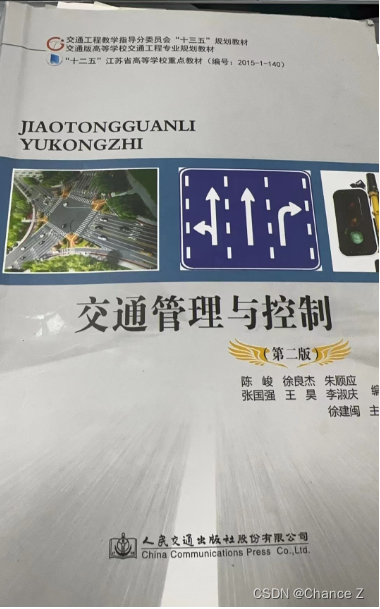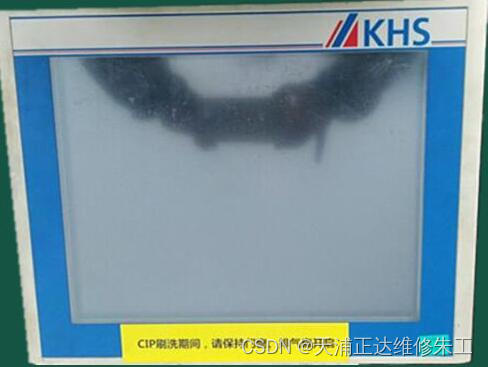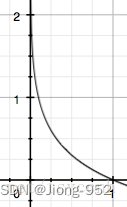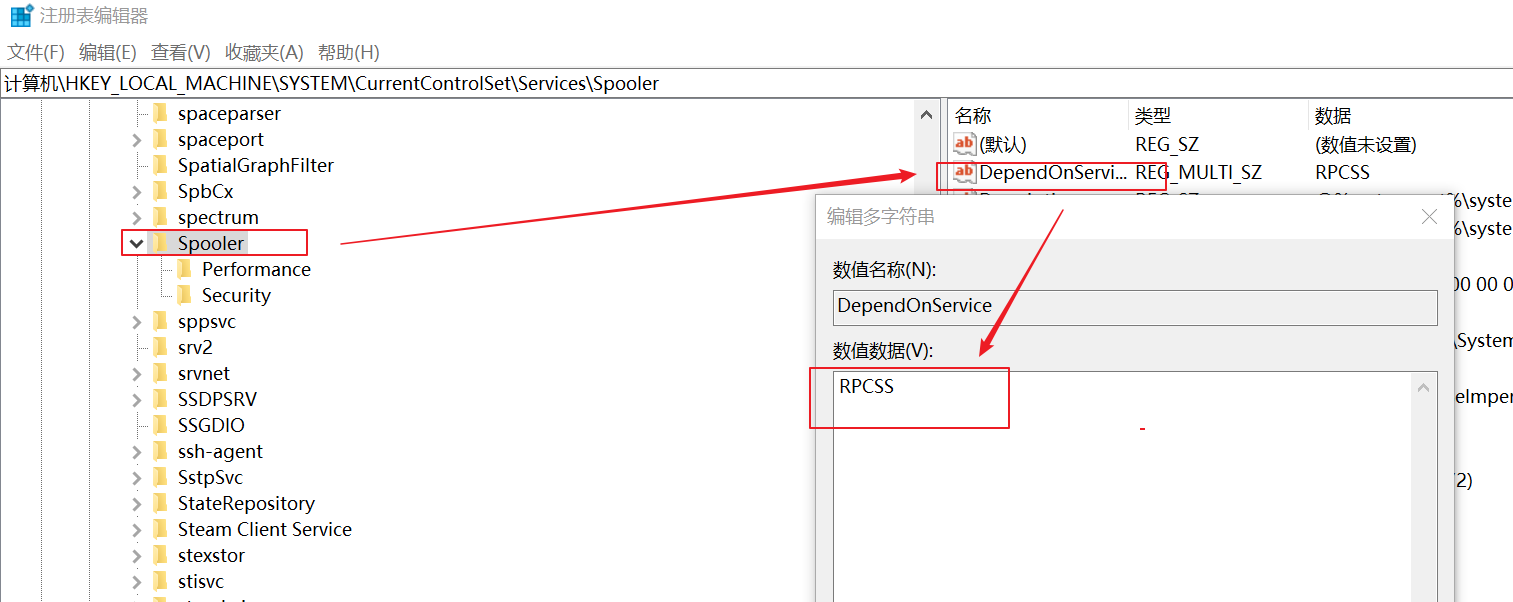文章目录
- 1. 论文动机
- 2. PointPillars概述
- 3. PointPillars模型
- 3.1 Pillar Feature Net
- 3.1.1 Pillar Feature Net模块理论解析
- 3.1.2 Pillar Feature Net模块代码解析
- 3.2 Backbone(2D CNN)
- 3.2.1 Backbone(2D CNN)模块理论解析
- 3.2.2 Backbone(2D CNN)模块代码解析
- 3.3 Detection Head(SSD)
- 3.3.1 Detection Head(SSD)模块理论解析
- 3.3.1 Detection Head(SSD)模块代码解析
- 4. Loss
- 4.1 Loss原理部分解析
- 4.2 Loss代码部分解析
- 4.2.1 先验框的生成
- 4.2.2 GT和先验框的匹配(target assignment)
- 4.2.3 box编码实现
- 4.2.4 loss计算
- 5. 参考链接:
声明:博客内容仅为个人学习笔记记录!
文章信息
标题:PointPillars: Fast Encoders for Object Detection from Point Clouds(CVPR 2019)
作者:Alex H. Lang、Sourabh Vora、Holger Caesar、Lubing Zhou、Jiong Yang、Oscar Beijbom
文章链接:https://arxiv.org/pdf/1812.05784.pdf
文章代码:https://github.com/nutonomy/second.pytorch
博客代码:https://github.com/open-mmlab/OpenPCDet
1. 论文动机
- 解决传统基于栅格化的3D目标检测方法在面对高密度点云数据时的性能瓶颈;
- 栅格化方法需要将点云数据映射到规则的网格中,但是对于高密度点云,栅格化操作会导致严重的信息损失和运算效率低下;
- 因此,该论文提出了一种新的基于点云的3D目标检测方法——PointPillars,将点云数据转化为伪图像,然后使用2D卷积神经网络进行目标检测,以解决传统栅格化方法的问题。
2. PointPillars概述
PointPillars是 3D 目标检测算法中一个十分经典的模型,PointPillars算法在实际场景中具有广泛的应用,可以为各种自动驾驶、智能交通等领域的应用提供有力的支持和帮助。PointPillars算法采用了一种基于二维卷积神经网络的点云处理方式,将点云数据转换为二维伪图像格式,并通过多层卷积神经网络对点云数据进行特征提取和编码,从而实现目标检测和定位。
3D检测算法通常有以下几种形式:
(1)将点云数据划纳入一个个体素(Voxel)中,构成规则的、密集分布的体素集,如有VoxelNet和SECOND。
(2)从前视和俯视角度对点云数据进行投影映射处理,获得一个个伪图片的数据。常见的模型有MV3D和AVOD。
(3)直接将点云数据映射到鸟瞰图后,再直接使用2D的检测框架的处理方法进行特征提取和RPN,实现3D的检测,如PIXOR、本文的主角pointpillar。
(4)使用pointnet直接从点云中对数据进行特征提取后获取proposals,然后根据获取的proposals进行微调,如Pointrcnn
相比于其他3D目标检测算法,PointPillars具有以下几个优点:
-
高效的点云处理方式:PointPillars算法采用了一种高效的点云处理方式,将点云数据转换为二维伪图像格式,从而大大降低了点云数据的复杂度和计算量,提高了点云处理的效率。
-
简单而高效的模型结构:PointPillars算法的模型结构相对简单,但却具有非常高的检测精度和鲁棒性,适合部署到实际场景中进行目标检测任务。
-
稳定的检测性能:PointPillars算法在各种不同场景下都具有稳定的检测性能,可以有效地检测出各种交通标志、车辆、行人等物体,并对其进行准确的定位和跟踪。
3. PointPillars模型
PointPillars 模型整体结构,如下图所示,PointPillars 的整个模型结构和 之前总结的VoxelNet 很类似, 整个网络结构分为三个部分:
- Pillar Feature Net:将输入的点云转换为稀疏的伪图像的特征形式。
- Backbone(2D CNN):使用 2D 的 CNN 处理伪图像特征得到高维度的特征。
- Detection Head(SSD):检测和回归 3D 边界框。
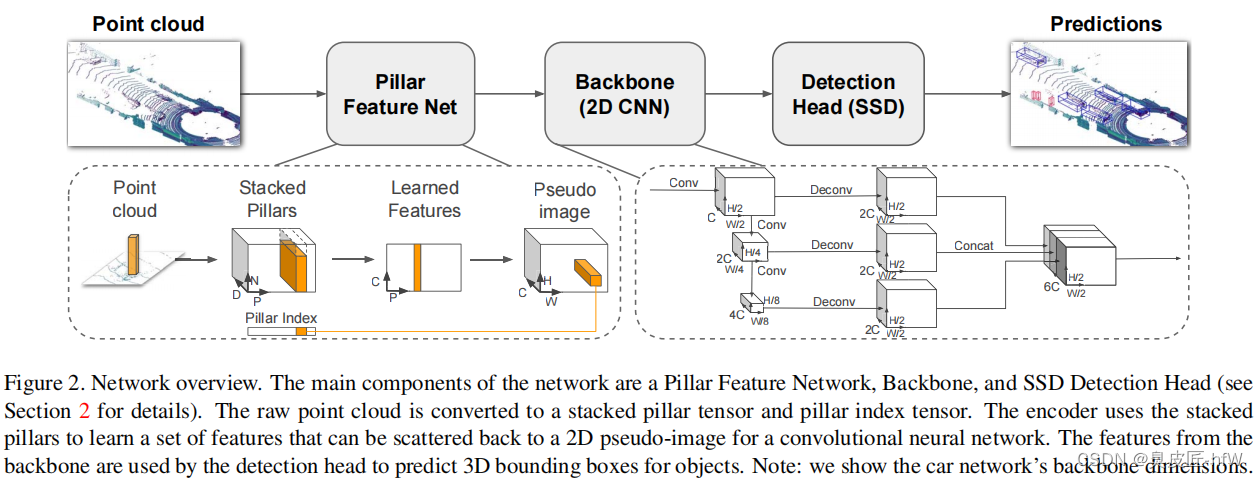
3.1 Pillar Feature Net
3.1.1 Pillar Feature Net模块理论解析
PointPillars提出了一种改进版本的点云表征方法pillar,它是在VoxelNet的基础上发展而来。与VoxelNet将点云转换为voxel并使用3D卷积处理特征相比,PointPillars使用2D卷积处理特征,将点云转换为伪图像形式,从而实现目标检测。这种方法在推理速度上有很大的优势。那么,什么是pillar呢?在原文中,pillar被描述为 “沿z轴方向具有无限空间范围的体素(voxel)”。简单来说,pillar是在x和y两个方向上被分成格子的空间,每个格子都在z轴上被拉伸以覆盖整个z轴方向,从而得到一个pillar。这意味着空间中的每个点都可以被划分到某个pillar中。
PointPillars 中的 PillarFeatureNet 模块的具体操作,如下图所示:

-
首先,将一个点云样本的空间划分为网格状的pillar,其中每个pillar的大小为在X轴和Y轴上的固定值。样本中的所有点将被划分到各自所在的pillar中,而没有点的pillar将被视为无效pillar。
-
其次, 需要对每个pillar中的点增加额外的5个维度数据,包括xc、yc、zc、xp和yp。其中,xc、yc、zc代表每个点的坐标偏移量,相对于该点所在pillar中所有点的平均坐标。而xp和yp则代表该点相对于pillar几何中心的X和Y偏移量。经过数据增强后,每个点的维度变为9维。具体地,每个点的编码包含了x、y、z、xc、yc、zc、xp和yp。需要注意的是,在OpenPCDet代码实现中,每个点的维度是10维,额外增加了一个zp,即该点相对于所在pillar在Z轴上的偏移量。
-
假设样本中包含P个有效的pillar,每个pillar最多只能包含N个点。对于一个pillar,如果其中的点数小于N,则用0来补全;如果超过N,则随机从该pillar中选取N个点进行采样。对于每个pillar中的每个点,我们需要进行编码,包括该点的坐标、反射强度、pillar几何中心以及该点相对于pillar几何中心的位置关系。由此得到的每个点的编码长度为D。整个点云样本可以表示为一个张量,其形状为(P, N, D)。
-
获得点云的pillar表示后,我们使用简化版的PointNet中的SA模块(a linear layer containing Batch-Norm and ReLu) 来提取特征。首先,对每个pillar中的每个点应用多层感知机(MLP)来将每个点的编码从D维映射到C维,从而得到形状为(P, N, C)的张量。接着,对每个pillar中的点应用最大池化,得到该pillar的特征向量。这一步同时消除了张量中的N维,最终得到形状为(P, C)的特征图。
-
最后,将(P, C)的特征图按照pillar的位置展开成伪图像特征,将P展开为(H, W)。这样我们就获得了类似于图像的(C, H, W)形式的特征表示。
3.1.2 Pillar Feature Net模块代码解析
1. Pillars数据预处理
(pcdet/datasets/processor/data_processor.py)
def transform_points_to_voxels(self, data_dict=None, config=None):
"""
将点云转换为pillar,使用spconv的VoxelGeneratorV2
因为pillar可是认为是一个z轴上所有voxel的集合,所以在设置的时候,
只需要将每个voxel的高度设置成kitti中点云的最大高度即可
"""
#初始化点云转换成pillar需要的参数
if data_dict is None:
# kitti截取的点云范围是[0, -39.68, -3, 69.12, 39.68, 1]
# 得到[69.12, 79.36, 4]/[0.16, 0.16, 4] = [432, 496, 1]
grid_size = (self.point_cloud_range[3:6] - self.point_cloud_range[0:3]) / np.array(config.VOXEL_SIZE)
self.grid_size = np.round(grid_size).astype(np.int64)
self.voxel_size = config.VOXEL_SIZE
# just bind the config, we will create the VoxelGeneratorWrapper later,
# to avoid pickling issues in multiprocess spawn
return partial(self.transform_points_to_voxels, config=config)
if self.voxel_generator is None:
self.voxel_generator = VoxelGeneratorWrapper(
#给定每个pillar的大小 [0.16, 0.16, 4]
vsize_xyz=config.VOXEL_SIZE,
#给定点云的范围 [0, -39.68, -3, 69.12, 39.68, 1]
coors_range_xyz=self.point_cloud_range,
#给定每个点云的特征维度,这里是x,y,z,r 其中r是激光雷达反射强度
num_point_features=self.num_point_features,
#给定每个pillar中最多能有多少个点 32
max_num_points_per_voxel=config.MAX_POINTS_PER_VOXEL,
#最多选取多少个pillar,因为生成的pillar中,很多都是没有点在里面的
# 可以重上面的可视化图像中查看到,所以这里只需要得到那些非空的pillar就行
max_num_voxels=config.MAX_NUMBER_OF_VOXELS[self.mode], # 16000
)
points = data_dict['points']
# 生成pillar输出
voxel_output = self.voxel_generator.generate(points)
# 假设一份点云数据是N*4,那么经过pillar生成后会得到三份数据
# voxels代表了每个生成的pillar数据,维度是[M,32,4]
# coordinates代表了每个生成的pillar所在的zyx轴坐标,维度是[M,3],其中z恒为0
# num_points代表了每个生成的pillar中有多少个有效的点维度是[m,],因为不满32会被0填充
voxels, coordinates, num_points = voxel_output
if not data_dict['use_lead_xyz']:
voxels = voxels[..., 3:] # remove xyz in voxels(N, 3)
data_dict['voxels'] = voxels
data_dict['voxel_coords'] = coordinates
data_dict['voxel_num_points'] = num_points
return data_dict
# 下面是使用spconv生成pillar的代码
class VoxelGeneratorWrapper():
def __init__(self, vsize_xyz, coors_range_xyz, num_point_features, max_num_points_per_voxel, max_num_voxels):
try:
from spconv.utils import VoxelGeneratorV2 as VoxelGenerator
self.spconv_ver = 1
except:
try:
from spconv.utils import VoxelGenerator
self.spconv_ver = 1
except:
from spconv.utils import Point2VoxelCPU3d as VoxelGenerator
self.spconv_ver = 2
if self.spconv_ver == 1:
self._voxel_generator = VoxelGenerator(
voxel_size=vsize_xyz,
point_cloud_range=coors_range_xyz,
max_num_points=max_num_points_per_voxel,
max_voxels=max_num_voxels
)
else:
self._voxel_generator = VoxelGenerator(
vsize_xyz=vsize_xyz,
coors_range_xyz=coors_range_xyz,
num_point_features=num_point_features,
max_num_points_per_voxel=max_num_points_per_voxel,
max_num_voxels=max_num_voxels
)
def generate(self, points):
if self.spconv_ver == 1:
voxel_output = self._voxel_generator.generate(points)
if isinstance(voxel_output, dict):
voxels, coordinates, num_points = \
voxel_output['voxels'], voxel_output['coordinates'], voxel_output['num_points_per_voxel']
else:
voxels, coordinates, num_points = voxel_output
else:
assert tv is not None, f"Unexpected error, library: 'cumm' wasn't imported properly."
voxel_output = self._voxel_generator.point_to_voxel(tv.from_numpy(points))
tv_voxels, tv_coordinates, tv_num_points = voxel_output
# make copy with numpy(), since numpy_view() will disappear as soon as the generator is deleted
voxels = tv_voxels.numpy()
coordinates = tv_coordinates.numpy()
num_points = tv_num_points.numpy()
return voxels, coordinates, num_points
在经过上面的预处理之后,就需要使用简化版的pointnet网络(MLP: linear layer + BatchNorm + ReLU)对每个pillar中的数据进行特征提取((D,P,N) --> MLP -->(C,P,N))。
2. Pillars特征提取
pcdet/models/backbones_3d/vfe/pillar_vfe.py
import torch
import torch.nn as nn
import torch.nn.functional as F
from .vfe_template import VFETemplate
class PFNLayer(nn.Module):
def __init__(self,
in_channels,
out_channels,
use_norm=True,
last_layer=False):
super().__init__()
self.last_vfe = last_layer
self.use_norm = use_norm
if not self.last_vfe:
out_channels = out_channels // 2
if self.use_norm:
# 根据论文中,这是是简化版pointnet网络层的初始化
# 论文中使用的是 1x1 的卷积层完成这里的升维操作(理论上使用卷积的计算速度会更快)
# 输入的通道数是刚刚经过数据增强过后的点云特征,每个点云有10个特征,
# 输出的通道数是64
self.linear = nn.Linear(in_channels, out_channels, bias=False)
# 一维BN层
self.norm = nn.BatchNorm1d(out_channels, eps=1e-3, momentum=0.01)
else:
self.linear = nn.Linear(in_channels, out_channels, bias=True)
self.part = 50000
def forward(self, inputs):
if inputs.shape[0] > self.part:
# nn.Linear performs randomly when batch size is too large
num_parts = inputs.shape[0] // self.part
part_linear_out = [self.linear(inputs[num_part * self.part:(num_part + 1) * self.part])
for num_part in range(num_parts + 1)]
x = torch.cat(part_linear_out, dim=0)
else:
# x的维度由(M, 32, 10)升维成了(M, 32, 64)
x = self.linear(inputs)
torch.backends.cudnn.enabled = False
# BatchNorm1d层:(M, 64, 32) --> (M, 32, 64)
# (pillars,num_point,channel)->(pillars,channel,num_points)
# 这里之所以变换维度,是因为BatchNorm1d在通道维度上进行,对于图像来说默认模式为[N,C,H*W],通道在第二个维度上
x = self.norm(x.permute(0, 2, 1)).permute(0, 2, 1) if self.use_norm else x
torch.backends.cudnn.enabled = True
x = F.relu(x)
# 完成pointnet的最大池化操作,找出每个pillar中最能代表该pillar的点
# x_max shape :(M, 1, 64)
x_max = torch.max(x, dim=1, keepdim=True)[0]
if self.last_vfe:
# 返回经过简化版pointnet处理pillar的结果
return x_max
else:
x_repeat = x_max.repeat(1, inputs.shape[1], 1)
x_concatenated = torch.cat([x, x_repeat], dim=2)
return x_concatenated
class PillarVFE(VFETemplate):
"""
model_cfg:NAME: PillarVFE
WITH_DISTANCE: False
USE_ABSLOTE_XYZ: True
USE_NORM: True
NUM_FILTERS: [64]
num_point_features:4
voxel_size:[0.16 0.16 4]
POINT_CLOUD_RANGE: [0, -39.68, -3, 69.12, 39.68, 1]
"""
def __init__(self, model_cfg, num_point_features, voxel_size, point_cloud_range, **kwargs):
super().__init__(model_cfg=model_cfg)
self.use_norm = self.model_cfg.USE_NORM
self.with_distance = self.model_cfg.WITH_DISTANCE
self.use_absolute_xyz = self.model_cfg.USE_ABSLOTE_XYZ
num_point_features += 6 if self.use_absolute_xyz else 3
if self.with_distance:
num_point_features += 1
self.num_filters = self.model_cfg.NUM_FILTERS
assert len(self.num_filters) > 0
num_filters = [num_point_features] + list(self.num_filters)
pfn_layers = []
for i in range(len(num_filters) - 1):
in_filters = num_filters[i]
out_filters = num_filters[i + 1]
pfn_layers.append(
PFNLayer(in_filters, out_filters, self.use_norm, last_layer=(i >= len(num_filters) - 2))
)
# 加入线性层,将10维特征变为64维特征
self.pfn_layers = nn.ModuleList(pfn_layers)
self.voxel_x = voxel_size[0]
self.voxel_y = voxel_size[1]
self.voxel_z = voxel_size[2]
self.x_offset = self.voxel_x / 2 + point_cloud_range[0]
self.y_offset = self.voxel_y / 2 + point_cloud_range[1]
self.z_offset = self.voxel_z / 2 + point_cloud_range[2]
def get_output_feature_dim(self):
return self.num_filters[-1]
def get_paddings_indicator(self, actual_num, max_num, axis=0):
"""
计算padding的指示
Args:
actual_num:每个voxel实际点的数量(M,)
max_num:voxel最大点的数量(32,)
Returns:
paddings_indicator:表明一个pillar中哪些是真实数据,哪些是填充的0数据
"""
# 扩展一个维度,使变为(M,1)
actual_num = torch.unsqueeze(actual_num, axis + 1)
# [1, 1]
max_num_shape = [1] * len(actual_num.shape)
# [1, -1]
max_num_shape[axis + 1] = -1
# (1,32)
max_num = torch.arange(max_num, dtype=torch.int, device=actual_num.device).view(max_num_shape)
# (M, 32)
paddings_indicator = actual_num.int() > max_num
return paddings_indicator
def forward(self, batch_dict, **kwargs):
"""
batch_dict:
points:(N,5) --> (batch_index,x,y,z,r) batch_index代表了该点云数据在当前batch中的index
frame_id:(4,) --> (003877,001908,006616,005355) 帧ID
gt_boxes:(4,40,8)--> (x,y,z,dx,dy,dz,ry,class)
use_lead_xyz:(4,) --> (1,1,1,1)
voxels:(M,32,4) --> (x,y,z,r)
voxel_coords:(M,4) --> (batch_index,z,y,x) batch_index代表了该点云数据在当前batch中的index
voxel_num_points:(M,)
image_shape:(4,2) 每份点云数据对应的2号相机图片分辨率
batch_size:4 batch_size大小
"""
voxel_features, voxel_num_points, coords = batch_dict['voxels'], batch_dict['voxel_num_points'], batch_dict[
'voxel_coords']
# 求每个pillar中所有点云的和 (M, 32, 3)->(M, 1, 3) 设置keepdim=True的,则保留原来的维度信息
# 然后在使用求和信息除以每个点云中有多少个点来求每个pillar中所有点云的平均值 points_mean shape:(M, 1, 3)
points_mean = voxel_features[:, :, :3].sum(dim=1, keepdim=True) / voxel_num_points.type_as(voxel_features).view(
-1, 1, 1)
# 每个点云数据减去该点对应pillar的平均值得到差值 xc,yc,zc
f_cluster = voxel_features[:, :, :3] - points_mean
# 创建每个点云到该pillar的坐标中心点偏移量空数据 xp,yp,zp
f_center = torch.zeros_like(voxel_features[:, :, :3])
# coords是每个网格点的坐标,即[432, 496, 1],需要乘以每个pillar的长宽得到点云数据中实际的长宽(单位米)
# 同时为了获得每个pillar的中心点坐标,还需要加上每个pillar长宽的一半得到中心点坐标
# 每个点的x、y、z减去对应pillar的坐标中心点,得到每个点到该点中心点的偏移量
f_center[:, :, 0] = voxel_features[:, :, 0] - (
coords[:, 3].to(voxel_features.dtype).unsqueeze(1) * self.voxel_x + self.x_offset)
f_center[:, :, 1] = voxel_features[:, :, 1] - (
coords[:, 2].to(voxel_features.dtype).unsqueeze(1) * self.voxel_y + self.y_offset)
# 此处偏移多了z轴偏移 论文中没有z轴偏移
f_center[:, :, 2] = voxel_features[:, :, 2] - (
coords[:, 1].to(voxel_features.dtype).unsqueeze(1) * self.voxel_z + self.z_offset)
# 如果使用绝对坐标,直接组合
if self.use_absolute_xyz:
features = [voxel_features, f_cluster, f_center]
# 否则,取voxel_features的3维之后,在组合
else:
features = [voxel_features[..., 3:], f_cluster, f_center]
# 如果使用距离信息
if self.with_distance:
# torch.norm的第一个2指的是求2范数,第二个2是在第三维度求范数
points_dist = torch.norm(voxel_features[:, :, :3], 2, 2, keepdim=True)
features.append(points_dist)
# 将特征在最后一维度拼接 得到维度为(M,32,10)的张量
features = torch.cat(features, dim=-1)
# 每个pillar中点云的最大数量
voxel_count = features.shape[1]
"""
由于在生成每个pillar中,不满足最大32个点的pillar会存在由0填充的数据,
而刚才上面的计算中,会导致这些
由0填充的数据在计算出现xc,yc,zc和xp,yp,zp出现数值,
所以需要将这个被填充的数据的这些数值清0,
因此使用get_paddings_indicator计算features中哪些是需要被保留真实数据和需要被置0的填充数据
"""
# 得到mask维度是(M, 32)
# mask中指名了每个pillar中哪些是需要被保留的数据
mask = self.get_paddings_indicator(voxel_num_points, voxel_count, axis=0)
# (M, 32)->(M, 32, 1)
mask = torch.unsqueeze(mask, -1).type_as(voxel_features)
# 将feature中被填充数据的所有特征置0
features *= mask
for pfn in self.pfn_layers:
features = pfn(features)
# (M, 64), 每个pillar抽象出一个64维特征
features = features.squeeze()
batch_dict['pillar_features'] = features
return batch_dict
使用简化版的 PointNet 网络提取每个pillar的特征信息后,需要将每个pillar的数据重新放回原来的坐标分布中,以组成伪图像数据。
3. 生成伪图像数据
pcdet/models/backbones_2d/map_to_bev/pointpillar_scatter.py
import torch
import torch.nn as nn
class PointPillarScatter(nn.Module):
"""
对应到论文中就是stacked pillars,将生成的pillar按照坐标索引还原到原空间中
"""
def __init__(self, model_cfg, grid_size, **kwargs):
super().__init__()
self.model_cfg = model_cfg
self.num_bev_features = self.model_cfg.NUM_BEV_FEATURES # 64
self.nx, self.ny, self.nz = grid_size # [432,496,1]
assert self.nz == 1
def forward(self, batch_dict, **kwargs):
"""
Args:
pillar_features:(M,64)
coords:(M, 4) 第一维是batch_index 其余维度为xyz
Returns:
batch_spatial_features:(batch_size, 64, 496, 432)
"""
# 拿到经过前面pointnet处理过后的pillar数据和每个pillar所在点云中的坐标位置
# pillar_features 维度 (M, 64)
# coords 维度 (M, 4)
pillar_features, coords = batch_dict['pillar_features'], batch_dict['voxel_coords']
# 将转换成为伪图像的数据存在到该列表中
batch_spatial_features = []
batch_size = coords[:, 0].max().int().item() + 1
# batch中的每个数据独立处理
for batch_idx in range(batch_size):
# 创建一个空间坐标所有用来接受pillar中的数据
# self.num_bev_features是64
# self.nz * self.nx * self.ny是生成的空间坐标索引 [496, 432, 1]的乘积
# spatial_feature 维度 (64,214272)
spatial_feature = torch.zeros(
self.num_bev_features,
self.nz * self.nx * self.ny,
dtype=pillar_features.dtype,
device=pillar_features.device) # (64,214272)-->1x432x496=214272
# 从coords[:, 0]取出该batch_idx的数据mask
batch_mask = coords[:, 0] == batch_idx
# 根据mask提取坐标
this_coords = coords[batch_mask, :]
# this_coords中存储的坐标是z,y和x的形式,且只有一层,因此计算索引的方式如下
# 平铺后需要计算前面有多少个pillar 一直到当前pillar的索引
"""
因为前面是将所有数据flatten成一维的了,相当于一个图片宽高为[496, 432]的图片
被flatten成一维的图片数据了,变成了496*432=214272;
而this_coords中存储的是平面(不需要考虑Z轴)中一个点的信息,所以要
将这个点的位置放回被flatten的一位数据时,需要计算在该点之前所有行的点总和加上
该点所在的列即可
"""
# 这里得到所有非空pillar在伪图像的对应索引位置
indices = this_coords[:, 1] + this_coords[:, 2] * self.nx + this_coords[:, 3]
# 转换数据类型
indices = indices.type(torch.long)
# 根据mask提取pillar_features
pillars = pillar_features[batch_mask, :]
pillars = pillars.t()
# 在索引位置填充pillars
spatial_feature[:, indices] = pillars
# 将空间特征加入list,每个元素为(64, 214272)
batch_spatial_features.append(spatial_feature)
# 在第0个维度将所有的数据堆叠在一起
batch_spatial_features = torch.stack(batch_spatial_features, 0)
# reshape回原空间(伪图像) (4, 64, 214272)--> (4, 64, 496, 432)
batch_spatial_features = batch_spatial_features.view(batch_size, self.num_bev_features * self.nz, self.ny,
self.nx)
# 将结果加入batch_dict
batch_dict['spatial_features'] = batch_spatial_features
return batch_dict
3.2 Backbone(2D CNN)
3.2.1 Backbone(2D CNN)模块理论解析
PointPillars使用类似VGG的结构来构建二维CNN主干。通过堆叠几个卷积层,主干将在每个阶段产生具有不同解决方案的特征图。来自几个阶段的特征图将被融合在一起,形成最终的特征表示。在特征融合过程中,去卷积层被引入,对具有较小分辨率的高水平特征图进行上采样。在去卷积之后,所有具有相同分辨率的输出特征图可以连接在一起,形成一个综合张量,用于最终的预测。
- 通过上述映射操作,我们将提取出的每个pillar的最大值放回到相应的坐标中,从而得到类似于图像的数据。在这个数据中,只有在pillar非空的坐标处才有提取的点云数据,其余地方都是0数据,因此得到的张量(batch_size,64, 432, 496)仍然非常稀疏。
- 接下来,我们使用2D中的特征提取手段对得到的张量数据进行多尺度的特征提取和拼接融合,如下图所示。这其实就是常规的卷积操作,随后进行拼接,需要注意维度的变换。
- 最终,通过所有上采样层得到的三个尺度的信息,每个尺度的shape都是(batch_size, 128, 248, 216)。在第一个维度上进行拼接,可以得到一个x维度为(batch_size, 384, 248, 216)的张量。

3.2.2 Backbone(2D CNN)模块代码解析
pcdet/models/backbones_2d/base_bev_backbone.py
import numpy as np
import torch
import torch.nn as nn
class BaseBEVBackbone(nn.Module):
def __init__(self, model_cfg, input_channels):
super().__init__()
self.model_cfg = model_cfg
# 读取下采样层参数
if self.model_cfg.get('LAYER_NUMS', None) is not None:
assert len(self.model_cfg.LAYER_NUMS) == len(self.model_cfg.LAYER_STRIDES) == len(
self.model_cfg.NUM_FILTERS)
layer_nums = self.model_cfg.LAYER_NUMS
layer_strides = self.model_cfg.LAYER_STRIDES
num_filters = self.model_cfg.NUM_FILTERS
else:
layer_nums = layer_strides = num_filters = []
# 读取上采样层参数
if self.model_cfg.get('UPSAMPLE_STRIDES', None) is not None:
assert len(self.model_cfg.UPSAMPLE_STRIDES) == len(self.model_cfg.NUM_UPSAMPLE_FILTERS)
num_upsample_filters = self.model_cfg.NUM_UPSAMPLE_FILTERS
upsample_strides = self.model_cfg.UPSAMPLE_STRIDES
else:
upsample_strides = num_upsample_filters = []
num_levels = len(layer_nums) # 2
c_in_list = [input_channels, *num_filters[:-1]] # (256, 128) input_channels:256, num_filters[:-1]:64,128
self.blocks = nn.ModuleList()
self.deblocks = nn.ModuleList()
for idx in range(num_levels): # (64,64)-->(64,128)-->(128,256) # 这里为cur_layers的第一层且stride=2
cur_layers = [
nn.ZeroPad2d(1),
nn.Conv2d(
c_in_list[idx], num_filters[idx], kernel_size=3,
stride=layer_strides[idx], padding=0, bias=False
),
nn.BatchNorm2d(num_filters[idx], eps=1e-3, momentum=0.01),
nn.ReLU()
]
for k in range(layer_nums[idx]): # 根据layer_nums堆叠卷积层
cur_layers.extend([
nn.Conv2d(num_filters[idx], num_filters[idx], kernel_size=3, padding=1, bias=False),
nn.BatchNorm2d(num_filters[idx], eps=1e-3, momentum=0.01),
nn.ReLU()
])
# 在block中添加该层
# *作用是:将列表解开成几个独立的参数,传入函数 # 类似的运算符还有两个星号(**),是将字典解开成独立的元素作为形参
self.blocks.append(nn.Sequential(*cur_layers))
if len(upsample_strides) > 0: # 构造上采样层 # (1, 2, 4)
stride = upsample_strides[idx]
if stride >= 1:
self.deblocks.append(nn.Sequential(
nn.ConvTranspose2d(
num_filters[idx], num_upsample_filters[idx],
upsample_strides[idx],
stride=upsample_strides[idx], bias=False
),
nn.BatchNorm2d(num_upsample_filters[idx], eps=1e-3, momentum=0.01),
nn.ReLU()
))
else:
stride = np.round(1 / stride).astype(np.int)
self.deblocks.append(nn.Sequential(
nn.Conv2d(
num_filters[idx], num_upsample_filters[idx],
stride,
stride=stride, bias=False
),
nn.BatchNorm2d(num_upsample_filters[idx], eps=1e-3, momentum=0.01),
nn.ReLU()
))
c_in = sum(num_upsample_filters) # 512
if len(upsample_strides) > num_levels:
self.deblocks.append(nn.Sequential(
nn.ConvTranspose2d(c_in, c_in, upsample_strides[-1], stride=upsample_strides[-1], bias=False),
nn.BatchNorm2d(c_in, eps=1e-3, momentum=0.01),
nn.ReLU(),
))
self.num_bev_features = c_in
def forward(self, data_dict):
"""
Args:
data_dict:
spatial_features : (4, 64, 496, 432)
Returns:
"""
spatial_features = data_dict['spatial_features']
ups = []
ret_dict = {}
x = spatial_features
for i in range(len(self.blocks)):
x = self.blocks[i](x)
stride = int(spatial_features.shape[2] / x.shape[2])
ret_dict['spatial_features_%dx' % stride] = x
if len(self.deblocks) > 0: # (4,64,248,216)-->(4,128,124,108)-->(4,256,62,54)
ups.append(self.deblocks[i](x))
else:
ups.append(x)
# 如果存在上采样层,将上采样结果连接
if len(ups) > 1:
"""
最终经过所有上采样层得到的3个尺度的的信息
每个尺度的 shape 都是 (batch_size, 128, 248, 216)
在第一个维度上进行拼接得到x 维度是 (batch_size, 384, 248, 216)
"""
x = torch.cat(ups, dim=1)
elif len(ups) == 1:
x = ups[0]
# Fasle
if len(self.deblocks) > len(self.blocks):
x = self.deblocks[-1](x)
# 将结果存储在spatial_features_2d中并返回
data_dict['spatial_features_2d'] = x
return data_dict
3.3 Detection Head(SSD)
3.3.1 Detection Head(SSD)模块理论解析
原文:在本文中,我们使用单击检测器(SSD)[18]设置来执行3D目标检测。与SSD类似,我们使用2D联合交叉(IoU)[4]将先验框与真值相匹配。边界框高度和标高未用于匹配;而不是给定2D匹配,高度和高程成为额外的回归目标。
类似于SSD的检测头被用于PiontPillars中,在OpenPCDet的实现中,直接使用一个网络对车、人、自行车三个类别进行训练,而没有像原论文中对车和人使用不同的网络结构。因此,在检测头中,一共有三个类别的先验框,每个先验框都有两个方向,分别是BEV视角下的0度和90度。每个类别的先验框只包含一种尺度信息。
- 车 [3.9, 1.6, 1.56]
- 人[0.8, 0.6, 1.73]
- 自行车[1.76, 0.6, 1.73](单位:米)
在进行anchor和GT的匹配过程中,PointPillars采用了2D IOU匹配方式,直接从BEV视角的特征图中进行匹配。这种匹配方式不需要考虑物体的高度信息,主要是因为在Kitti数据集中,所有物体都在同一个平面内,不存在一个物体在另一个物体上面的情况,并且所有类别物体的高度差异不大。因此,直接使用SmoothL1回归就可以得到较好的匹配结果。
每个anchor都需要预测七个参数:中心坐标的 (x, y, z) 以及长宽高 (w, l, h) 以及旋转角度 θ。此外,为了解决两个完全相反的box的角度预测问题,PointPillars的检测头还添加了一个基于softmax的方向分类来预测box的两个朝向信息。对于车、人和自行车这三个类别,每个anchor的正负样本匹配阈值不同,具体而言:
- 对于车辆,匹配IOU阈值大于等于0.65的anchor被视为正样本,小于0.45的被视为负样本,阈值在两者之间的样本不会被计算损失。
- 对于行人和自行车,匹配IOU阈值大于等于0.5的anchor被视为正样本,小于0.35的被视为负样本,阈值在两者之间的样本不会被计算损失。
3.3.1 Detection Head(SSD)模块代码解析
pcdet/models/dense_heads/anchor_head_single.py
import numpy as np
import torch.nn as nn
from .anchor_head_template import AnchorHeadTemplate
class AnchorHeadSingle(AnchorHeadTemplate):
"""
Args:
model_cfg: AnchorHeadSingle的配置
input_channels: 384 输入通道数
num_class: 3
class_names: ['Car','Pedestrian','Cyclist']
grid_size: (432, 496, 1)
point_cloud_range: (0, -39.68, -3, 69.12, 39.68, 1)
predict_boxes_when_training: False
"""
def __init__(self, model_cfg, input_channels, num_class, class_names, grid_size, point_cloud_range,
predict_boxes_when_training=True, **kwargs):
super().__init__(
model_cfg=model_cfg, num_class=num_class, class_names=class_names, grid_size=grid_size,
point_cloud_range=point_cloud_range,
predict_boxes_when_training=predict_boxes_when_training
)
# 每个点有3个尺度的个先验框 每个先验框都有两个方向(0度,90度) num_anchors_per_location:[2, 2, 2]
self.num_anchors_per_location = sum(self.num_anchors_per_location) # sum([2, 2, 2])
# Conv2d(512,18,kernel_size=(1,1),stride=(1,1))
self.conv_cls = nn.Conv2d(
input_channels, self.num_anchors_per_location * self.num_class,
kernel_size=1
)
# Conv2d(512,42,kernel_size=(1,1),stride=(1,1))
self.conv_box = nn.Conv2d(
input_channels, self.num_anchors_per_location * self.box_coder.code_size,
kernel_size=1
)
# 如果存在方向损失,则添加方向卷积层Conv2d(512,12,kernel_size=(1,1),stride=(1,1))
if self.model_cfg.get('USE_DIRECTION_CLASSIFIER', None) is not None:
self.conv_dir_cls = nn.Conv2d(
input_channels,
self.num_anchors_per_location * self.model_cfg.NUM_DIR_BINS,
kernel_size=1
)
else:
self.conv_dir_cls = None
self.init_weights()
# 初始化参数
def init_weights(self):
pi = 0.01
# 初始化分类卷积偏置
nn.init.constant_(self.conv_cls.bias, -np.log((1 - pi) / pi))
# 初始化分类卷积权重
nn.init.normal_(self.conv_box.weight, mean=0, std=0.001)
def forward(self, data_dict):
# 从字典中取出经过backbone处理过的信息
# spatial_features_2d 维度 (batch_size, 384, 248, 216)
spatial_features_2d = data_dict['spatial_features_2d']
# 每个坐标点上面6个先验框的类别预测 --> (batch_size, 18, 200, 176)
cls_preds = self.conv_cls(spatial_features_2d)
# 每个坐标点上面6个先验框的参数预测 --> (batch_size, 42, 200, 176) 其中每个先验框需要预测7个参数,分别是(x, y, z, w, l, h, θ)
box_preds = self.conv_box(spatial_features_2d)
# 维度调整,将类别放置在最后一维度 [N, H, W, C] --> (batch_size, 200, 176, 18)
cls_preds = cls_preds.permute(0, 2, 3, 1).contiguous()
# 维度调整,将先验框调整参数放置在最后一维度 [N, H, W, C] --> (batch_size ,200, 176, 42)
box_preds = box_preds.permute(0, 2, 3, 1).contiguous()
# 将类别和先验框调整预测结果放入前向传播字典中
self.forward_ret_dict['cls_preds'] = cls_preds
self.forward_ret_dict['box_preds'] = box_preds
# 进行方向分类预测
if self.conv_dir_cls is not None:
# # 每个先验框都要预测为两个方向中的其中一个方向 --> (batch_size, 12, 200, 176)
dir_cls_preds = self.conv_dir_cls(spatial_features_2d)
# 将类别和先验框方向预测结果放到最后一个维度中 [N, H, W, C] --> (batch_size, 248, 216, 12)
dir_cls_preds = dir_cls_preds.permute(0, 2, 3, 1).contiguous()
# 将方向预测结果放入前向传播字典中
self.forward_ret_dict['dir_cls_preds'] = dir_cls_preds
else:
dir_cls_preds = None
"""
如果是在训练模式的时候,需要对每个先验框分配GT来计算loss
"""
if self.training:
# targets_dict = {
# 'box_cls_labels': cls_labels, # (4,211200)
# 'box_reg_targets': bbox_targets, # (4,211200, 7)
# 'reg_weights': reg_weights # (4,211200)
# }
targets_dict = self.assign_targets(
gt_boxes=data_dict['gt_boxes'] # (4,39,8)
)
# 将GT分配结果放入前向传播字典中
self.forward_ret_dict.update(targets_dict)
# 如果不是训练模式,则直接生成进行box的预测
if not self.training or self.predict_boxes_when_training:
# 根据预测结果解码生成最终结果
batch_cls_preds, batch_box_preds = self.generate_predicted_boxes(
batch_size=data_dict['batch_size'],
cls_preds=cls_preds, box_preds=box_preds, dir_cls_preds=dir_cls_preds
)
data_dict['batch_cls_preds'] = batch_cls_preds # (1, 211200, 3) 70400*3=211200
data_dict['batch_box_preds'] = batch_box_preds # (1, 211200, 7)
data_dict['cls_preds_normalized'] = False
return data_dict
4. Loss
4.1 Loss原理部分解析
原文:我们使用SECOND[28]中介绍的相同损失函数。真值框和锚由( x , y , z , w , l , h , θ ) (x,y,z,w,l,h,θ)(x,y,z,w,l,h,θ)定义。真值和锚之间的定位回归残差定义如下:

中xgt和xa分别是真值和锚框,
总定位损失为:

对于每个先验框的物体类别分类,PointPillars使用了focal loss,来完成调节正负样本均衡,和难样本挖掘。公式定义如下:

3.先验框方向分类
由于在角度回归的时候,不可以完全区分两个两个方向完全相反的预测框,所以在实现的时候,作者加入了对先验框的方向分类,使用softmax函数预测方向的类别。
因此总损失定义如下:

4.2 Loss代码部分解析
在OpenPCDet框架中loss计算的代码实现中涉及三个子模块完成
4.2.1 先验框的生成
pcdet/models/dense_heads/target_assigner/anchor_generator.py
import torch
class AnchorGenerator(object):
def __init__(self, anchor_range, anchor_generator_config):
super().__init__()
self.anchor_generator_cfg = anchor_generator_config # list:3
# 得到anchor在点云中的分布范围[0, -39.68, -3, 69.12, 39.68, 1]
self.anchor_range = anchor_range
# 得到配置参数中所有尺度anchor的长宽高
# list:3 --> 车、人、自行车[[[3.9, 1.6, 1.56]],[[0.8, 0.6, 1.73]],[[1.76, 0.6, 1.73]]]
self.anchor_sizes = [config['anchor_sizes'] for config in anchor_generator_config]
# 得到anchor的旋转角度,这是是弧度,也就是0度和90度
# list:3 --> [[0, 1.57],[0, 1.57],[0, 1.57]]
self.anchor_rotations = [config['anchor_rotations'] for config in anchor_generator_config]
# 得到每个anchor初始化在点云中z轴的位置,其中在kitti中点云的z轴范围是-3米到1米
# list:3 --> [[-1.78],[-0.6],[-0.6]]
self.anchor_heights = [config['anchor_bottom_heights'] for config in anchor_generator_config]
# 每个先验框产生的时候是否需要在每个格子的中间,
# 例如坐标点为[1,1],如果需要对齐中心点的话,需要加上0.5变成[1.5, 1.5]
# 默认为False
# list:3 --> [False, False, False]
self.align_center = [config.get('align_center', False) for config in anchor_generator_config]
assert len(self.anchor_sizes) == len(self.anchor_rotations) == len(self.anchor_heights)
self.num_of_anchor_sets = len(self.anchor_sizes) # 3
def generate_anchors(self, grid_sizes):
assert len(grid_sizes) == self.num_of_anchor_sets
# 1.初始化
all_anchors = []
num_anchors_per_location = []
# 2.三个类别的先验框逐类别生成
for grid_size, anchor_size, anchor_rotation, anchor_height, align_center in zip(
grid_sizes, self.anchor_sizes, self.anchor_rotations, self.anchor_heights, self.align_center):
# 2 = 2x1x1 --> 每个位置产生2个anchor,这里的2代表两个方向
num_anchors_per_location.append(len(anchor_rotation) * len(anchor_size) * len(anchor_height))
# 不需要对齐中心点来生成先验框
if align_center:
x_stride = (self.anchor_range[3] - self.anchor_range[0]) / grid_size[0]
y_stride = (self.anchor_range[4] - self.anchor_range[1]) / grid_size[1]
# 中心对齐,平移半个网格
x_offset, y_offset = x_stride / 2, y_stride / 2
else:
# 2.1计算每个网格的在点云空间中的实际大小
# 用于将每个anchor映射回实际点云中的大小
# (69.12 - 0) / (216 - 1) = 0.3214883848678234 单位:米
x_stride = (self.anchor_range[3] - self.anchor_range[0]) / (grid_size[0] - 1)
# (39.68 - (-39.68.)) / (248 - 1) = 0.3212955490297634 单位:米
y_stride = (self.anchor_range[4] - self.anchor_range[1]) / (grid_size[1] - 1)
# 由于没有进行中心对齐,所有每个点相对于左上角坐标的偏移量都是0
x_offset, y_offset = 0, 0
# 2.2 生成单个维度x_shifts,y_shifts和z_shifts
# 以x_stride为step,在self.anchor_range[0] + x_offset和self.anchor_range[3] + 1e-5,
# 产生x坐标 --> 216个点 [0, 69.12]
x_shifts = torch.arange(
self.anchor_range[0] + x_offset, self.anchor_range[3] + 1e-5, step=x_stride, dtype=torch.float32,
).cuda()
# 产生y坐标 --> 248个点 [0, 79.36]
y_shifts = torch.arange(
self.anchor_range[1] + y_offset, self.anchor_range[4] + 1e-5, step=y_stride, dtype=torch.float32,
).cuda()
"""
new_tensor函数可以返回一个新的张量数据,该张量数据与指定的有相同的属性
如拥有相同的数据类型和张量所在的设备情况等属性;
并使用anchor_height数值个来填充这个张量
"""
# [-1.78]
z_shifts = x_shifts.new_tensor(anchor_height)
# num_anchor_size = 1
# num_anchor_rotation = 2
num_anchor_size, num_anchor_rotation = anchor_size.__len__(), anchor_rotation.__len__() # 1, 2
# [0, 1.57] 弧度制
anchor_rotation = x_shifts.new_tensor(anchor_rotation)
# [[3.9, 1.6, 1.56]]
anchor_size = x_shifts.new_tensor(anchor_size)
# 2.3 调用meshgrid生成网格坐标
x_shifts, y_shifts, z_shifts = torch.meshgrid([
x_shifts, y_shifts, z_shifts
])
# meshgrid可以理解为在原来的维度上进行扩展,例如:
# x原来为(216,)-->(216,1, 1)--> (216,248,1)
# y原来为(248,)--> (1,248,1)--> (216,248,1)
# z原来为 (1, ) --> (1,1,1) --> (216,248,1)
# 2.4.anchor各个维度堆叠组合,生成最终anchor(1,432,496,1,2,7)
# 2.4.1.堆叠anchor的位置
# [x, y, z, 3]-->[216, 248, 1, 3] 代表了每个anchor的位置信息
# 其中3为该点所在映射tensor中的(z, y, x)数值
anchors = torch.stack((x_shifts, y_shifts, z_shifts), dim=-1)
# 2.4.2.将anchor的位置和大小进行组合,编程为将anchor扩展并复制为相同维度(除了最后一维),然后进行组合
# (216, 248, 1, 3) --> (216, 248, 1 , 1, 3)
# 维度分别代表了: z,y,x, 该类别anchor的尺度数量,该个anchor的位置信息
anchors = anchors[:, :, :, None, :].repeat(1, 1, 1, anchor_size.shape[0], 1)
# (1, 1, 1, 1, 3) --> (216, 248, 1, 1, 3)
anchor_size = anchor_size.view(1, 1, 1, -1, 3).repeat([*anchors.shape[0:3], 1, 1])
# anchors生成的最终结果需要有位置信息和大小信息 --> (216, 248, 1, 1, 6)
# 最后一个纬度中表示(z, y, x, l, w, h)
anchors = torch.cat((anchors, anchor_size), dim=-1)
# 2.4.3.将anchor的位置和大小和旋转角进行组合
# 在倒数第二个维度上增加一个维度,然后复制该维度一次
# (216, 248, 1, 1, 2, 6) 长, 宽, 深, anchor尺度数量, 该尺度旋转角个数,anchor的6个参数
anchors = anchors[:, :, :, :, None, :].repeat(1, 1, 1, 1, num_anchor_rotation, 1)
# (216, 248, 1, 1, 2, 1) 两个不同方向先验框的旋转角度
anchor_rotation = anchor_rotation.view(1, 1, 1, 1, -1, 1).repeat(
[*anchors.shape[0:3], num_anchor_size, 1, 1])
# [z, y, x, num_size, num_rot, 7] --> (216, 248, 1, 1, 2, 7)
# 最后一个纬度表示为anchors的位置+大小+旋转角度(z, y, x, l, w, h, theta)
anchors = torch.cat((anchors, anchor_rotation), dim=-1) # [z, y, x, num_size, num_rot, 7]
# 2.5 置换anchor的维度
# [z, y, x, num_anchor_size, num_rot, 7]-->[x, y, z, num_anchor_zie, num_rot, 7]
# 最后一个纬度代表了 : [x, y, z, dx, dy, dz, rot]
anchors = anchors.permute(2, 1, 0, 3, 4, 5).contiguous()
# 使得各类anchor的z轴方向从anchor的底部移动到该anchor的中心点位置
# 车 : -1.78 + 1.56/2 = -1.0
# 人、自行车 : -0.6 + 1.73/2 = 0.23
anchors[..., 2] += anchors[..., 5] / 2
all_anchors.append(anchors)
# all_anchors: [(1,248,216,1,2,7),(1,248,216,1,2,7),(1,248,216,1,2,7)]
# num_anchors_per_location:[2,2,2]
return all_anchors, num_anchors_per_location
4.2.2 GT和先验框的匹配(target assignment)
按照注释理解如何计算一帧点云数据中所有类别和锚点的匹配关系。
assign_targets函数完成了对一帧点云数据中所有类别和锚点的正负样本分配,assign_targets_single函数则完成了对一帧中每个类别的真实框和锚点的正负样本分配。因此,一个Batch样本中,对于每个类别和每一帧点云数据,都需要进行一次锚点和真实框的匹配。与图像目标检测稍有不同。
pcdet/models/dense_heads/target_assigner/axis_aligned_target_assigner.py
import numpy as np
import torch
from ....ops.iou3d_nms import iou3d_nms_utils
from ....utils import box_utils
class AxisAlignedTargetAssigner(object):
def __init__(self, model_cfg, class_names, box_coder, match_height=False):
super().__init__()
# anchor生成配置参数
anchor_generator_cfg = model_cfg.ANCHOR_GENERATOR_CONFIG
# 为预测box找对应anchor的参数
anchor_target_cfg = model_cfg.TARGET_ASSIGNER_CONFIG
# 编码box的7个残差参数(x, y, z, w, l, h, θ) --> pcdet.utils.box_coder_utils.ResidualCoder
self.box_coder = box_coder
# 在PointPillars中指定正负样本的时候由BEV视角计算GT和先验框的iou,不需要进行z轴上的高度的匹配,
# 想法是:1、点云中的物体都在同一个平面上,没有物体在Z轴发生重叠的情况
# 2、每个类别的高度相差不是很大,直接使用SmoothL1损失就可以达到很好的高度回归效果
self.match_height = match_height
# 类别名称['Car', 'Pedestrian', 'Cyclist']
self.class_names = np.array(class_names)
# ['Car', 'Pedestrian', 'Cyclist']
self.anchor_class_names = [config['class_name'] for config in anchor_generator_cfg]
# anchor_target_cfg.POS_FRACTION = -1 < 0 --> None
# 前景、背景采样系数 PointPillars不考虑
self.pos_fraction = anchor_target_cfg.POS_FRACTION if anchor_target_cfg.POS_FRACTION >= 0 else None
# 总采样数 PointPillars不考虑
self.sample_size = anchor_target_cfg.SAMPLE_SIZE # 512
# False 前景权重由 1/前景anchor数量 PointPillars不考虑
self.norm_by_num_examples = anchor_target_cfg.NORM_BY_NUM_EXAMPLES
# 类别iou匹配为正样本阈值{'Car':0.6, 'Pedestrian':0.5, 'Cyclist':0.5}
self.matched_thresholds = {}
# 类别iou匹配为负样本阈值{'Car':0.45, 'Pedestrian':0.35, 'Cyclist':0.35}
self.unmatched_thresholds = {}
for config in anchor_generator_cfg:
self.matched_thresholds[config['class_name']] = config['matched_threshold']
self.unmatched_thresholds[config['class_name']] = config['unmatched_threshold']
self.use_multihead = model_cfg.get('USE_MULTIHEAD', False) # False
# self.separate_multihead = model_cfg.get('SEPARATE_MULTIHEAD', False)
# if self.seperate_multihead:
# rpn_head_cfgs = model_cfg.RPN_HEAD_CFGS
# self.gt_remapping = {}
# for rpn_head_cfg in rpn_head_cfgs:
# for idx, name in enumerate(rpn_head_cfg['HEAD_CLS_NAME']):
# self.gt_remapping[name] = idx + 1
def assign_targets(self, all_anchors, gt_boxes_with_classes):
"""
处理一批数据中所有点云的anchors和gt_boxes,
计算每个anchor属于前景还是背景,
为每个前景的anchor分配类别和计算box的回归残差和回归权重
Args:
all_anchors: [(N, 7), ...]
gt_boxes_with_classes: (B, M, 8) # 最后维度数据为 (x, y, z, w, l, h, θ,class)
Returns:
all_targets_dict = {
# 每个anchor的类别
'box_cls_labels': cls_labels, # (batch_size,num_of_anchors)
# 每个anchor的回归残差 -->(∆x, ∆y, ∆z, ∆l, ∆w, ∆h, ∆θ)
'box_reg_targets': bbox_targets, # (batch_size,num_of_anchors,7)
# 每个box的回归权重
'reg_weights': reg_weights # (batch_size,num_of_anchors)
}
"""
# 1.初始化结果list并提取对应的gt_box和类别
bbox_targets = []
cls_labels = []
reg_weights = []
# 得到批大小
batch_size = gt_boxes_with_classes.shape[0] # 4
# 得到所有GT的类别
gt_classes = gt_boxes_with_classes[:, :, -1] # (4,num_of_gt)
# 得到所有GT的7个box参数
gt_boxes = gt_boxes_with_classes[:, :, :-1] # (4,num_of_gt,7)
# 2.对batch中的所有数据逐帧匹配anchor的前景和背景
for k in range(batch_size):
cur_gt = gt_boxes[k] # 取出当前帧中的 gt_boxes (num_of_gt,7)
"""
由于在OpenPCDet的数据预处理时,以一批数据中拥有GT数量最多的帧为基准,
其他帧中GT数量不足,则会进行补0操作,使其成为一个矩阵,例:
[
[1,1,2,2,3,2],
[2,2,3,1,0,0],
[3,1,2,0,0,0]
]
因此这里从每一行的倒数第二个类别开始判断,
截取最后一个非零元素的索引,来取出当前帧中真实的GT数据
"""
cnt = cur_gt.__len__() - 1 # 得到一批数据中最多有多少个GT
# 这里的循环是找到最后一个非零的box,因为预处理的时候会按照batch最大box的数量处理,不足的进行补0
while cnt > 0 and cur_gt[cnt].sum() == 0:
cnt -= 1
# 2.1提取当前帧非零的box和类别
cur_gt = cur_gt[:cnt + 1]
# cur_gt_classes 例: tensor([1, 1, 2, 2, 2, 2, 2, 3, 3, 3, 3], device='cuda:0', dtype=torch.int32)
cur_gt_classes = gt_classes[k][:cnt + 1].int()
target_list = []
# 2.2 对每帧中的anchor和GT分类别,单独计算前背景
# 计算时候 每个类别的anchor是独立计算的 不同于在ssd中整体计算iou并取最大值
for anchor_class_name, anchors in zip(self.anchor_class_names, all_anchors):
# anchor_class_name : 车 | 行人 | 自行车
# anchors : (1, 200, 176, 1, 2, 7) 7 --> (x, y, z, l, w, h, θ)
if cur_gt_classes.shape[0] > 1:
# self.class_names : ["car", "person", "cyclist"]
# 这里减1是因为列表索引从0开始,目的是得到属于列表中gt中哪些类别是与当前处理的了类别相同,得到类别mask
mask = torch.from_numpy(self.class_names[cur_gt_classes.cpu() - 1] == anchor_class_name)
else:
mask = torch.tensor([self.class_names[c - 1] == anchor_class_name
for c in cur_gt_classes], dtype=torch.bool)
# 在检测头中是否使用多头,是的话 此处为True,默认为False
if self.use_multihead: # False
anchors = anchors.permute(3, 4, 0, 1, 2, 5).contiguous().view(-1, anchors.shape[-1])
# if self.seperate_multihead:
# selected_classes = cur_gt_classes[mask].clone()
# if len(selected_classes) > 0:
# new_cls_id = self.gt_remapping[anchor_class_name]
# selected_classes[:] = new_cls_id
# else:
# selected_classes = cur_gt_classes[mask]
selected_classes = cur_gt_classes[mask]
else:
# 2.2.1 计算所需的变量 得到特征图的大小
feature_map_size = anchors.shape[:3] # (1, 248, 216)
# 将所有的anchors展平 shape : (216, 248, 1, 1, 2, 7) --> (107136, 7)
anchors = anchors.view(-1, anchors.shape[-1])
# List: 根据累呗mask索引得到该帧中当前需要处理的类别 --> 车 | 行人 | 自行车
selected_classes = cur_gt_classes[mask]
# 2.2.2 使用assign_targets_single来单独为某一类别的anchors分配gt_boxes,
# 并为前景、背景的box设置编码和回归权重
single_target = self.assign_targets_single(
anchors, # 该类的所有anchor
cur_gt[mask], # GT_box shape : (num_of_GT_box, 7)
gt_classes=selected_classes, # 当前选中的类别
matched_threshold=self.matched_thresholds[anchor_class_name], # 当前类别anchor与GT匹配为正样本的阈值
unmatched_threshold=self.unmatched_thresholds[anchor_class_name] # 当前类别anchor与GT匹配为负样本的阈值
)
target_list.append(single_target)
# 到目前为止,处理完该帧单个类别和该类别anchor的前景和背景分配
if self.use_multihead:
target_dict = {
'box_cls_labels': [t['box_cls_labels'].view(-1) for t in target_list],
'box_reg_targets': [t['box_reg_targets'].view(-1, self.box_coder.code_size) for t in target_list],
'reg_weights': [t['reg_weights'].view(-1) for t in target_list]
}
target_dict['box_reg_targets'] = torch.cat(target_dict['box_reg_targets'], dim=0)
target_dict['box_cls_labels'] = torch.cat(target_dict['box_cls_labels'], dim=0).view(-1)
target_dict['reg_weights'] = torch.cat(target_dict['reg_weights'], dim=0).view(-1)
else:
target_dict = {
# feature_map_size:(1,200,176, 2)
'box_cls_labels': [t['box_cls_labels'].view(*feature_map_size, -1) for t in target_list],
# (1,248,216, 2, 7)
'box_reg_targets': [t['box_reg_targets'].view(*feature_map_size, -1, self.box_coder.code_size)
for t in target_list],
# (1,248,216, 2)
'reg_weights': [t['reg_weights'].view(*feature_map_size, -1) for t in target_list]
}
# list : 3*anchor (1, 248, 216, 2, 7) --> (1, 248, 216, 6, 7) -> (321408, 7)
target_dict['box_reg_targets'] = torch.cat(
target_dict['box_reg_targets'], dim=-2
).view(-1, self.box_coder.code_size)
# list:3 (1, 248, 216, 2) --> (1,248, 216, 6) -> (1*248*216*6, )
target_dict['box_cls_labels'] = torch.cat(target_dict['box_cls_labels'], dim=-1).view(-1)
# list:3 (1, 200, 176, 2) --> (1, 200, 176, 6) -> (1*248*216*6, )
target_dict['reg_weights'] = torch.cat(target_dict['reg_weights'], dim=-1).view(-1)
# 将结果填入对应的容器
bbox_targets.append(target_dict['box_reg_targets'])
cls_labels.append(target_dict['box_cls_labels'])
reg_weights.append(target_dict['reg_weights'])
# 到这里该batch的点云全部处理完
# 3.将结果stack并返回
bbox_targets = torch.stack(bbox_targets, dim=0) # (batch_size,321408,7)
cls_labels = torch.stack(cls_labels, dim=0) # (batch_size,321408)
reg_weights = torch.stack(reg_weights, dim=0) # (batch_size,321408)
all_targets_dict = {
'box_cls_labels': cls_labels, # (batch_size,321408)
'box_reg_targets': bbox_targets, # (batch_size,321408,7)
'reg_weights': reg_weights # (batch_size,321408)
}
return all_targets_dict
def assign_targets_single(self, anchors, gt_boxes, gt_classes, matched_threshold=0.6, unmatched_threshold=0.45):
"""
针对某一类别的anchors和gt_boxes,计算前景和背景anchor的类别,box编码和回归权重
Args:
anchors: (107136, 7)
gt_boxes: (该帧中该类别的GT数量,7)
gt_classes: (该帧中该类别的GT数量, 1)
matched_threshold:0.6
unmatched_threshold:0.45
Returns:
前景anchor
ret_dict = {
'box_cls_labels': labels, # (107136,)
'box_reg_targets': bbox_targets, # (107136,7)
'reg_weights': reg_weights, # (107136,)
}
"""
# ----------------------------1.初始化-------------------------------#
num_anchors = anchors.shape[0] # 216 * 248 = 107136
num_gt = gt_boxes.shape[0] # 该帧中该类别的GT数量
# 初始化anchor对应的label和gt_id ,并置为 -1,-1表示loss计算时候不会被考虑,背景的类别被设置为0
labels = torch.ones((num_anchors,), dtype=torch.int32, device=anchors.device) * -1
gt_ids = torch.ones((num_anchors,), dtype=torch.int32, device=anchors.device) * -1
# ---------------------2.计算该类别中anchor的前景和背景------------------------#
if len(gt_boxes) > 0 and anchors.shape[0] > 0:
# 1.计算该帧中某一个类别gt和对应anchors之间的iou(jaccard index)
# anchor_by_gt_overlap shape : (107136, num_gt)
# anchor_by_gt_overlap代表当前类别的所有anchor和当前类别中所有GT的iou
anchor_by_gt_overlap = iou3d_nms_utils.boxes_iou3d_gpu(anchors[:, 0:7], gt_boxes[:, 0:7]) \
if self.match_height else box_utils.boxes3d_nearest_bev_iou(anchors[:, 0:7], gt_boxes[:, 0:7])
# NOTE: The speed of these two versions depends the environment and the number of anchors
# anchor_to_gt_argmax = torch.from_numpy(anchor_by_gt_overlap.cpu().numpy().argmax(axis=1)).cuda()
# 2.得到每一个anchor与哪个的GT的的iou最大
# anchor_to_gt_argmax表示数据维度是anchor的长度,索引是gt
anchor_to_gt_argmax = anchor_by_gt_overlap.argmax(dim=1)
# anchor_to_gt_max得到每一个anchor最匹配的gt的iou数值
anchor_to_gt_max = anchor_by_gt_overlap[
torch.arange(num_anchors, device=anchors.device), anchor_to_gt_argmax]
# gt_to_anchor_argmax = torch.from_numpy(anchor_by_gt_overlap.cpu().numpy().argmax(axis=0)).cuda()
# 3.找到每个gt最匹配anchor的索引和iou
# (num_of_gt,) 得到每个gt最匹配的anchor索引
gt_to_anchor_argmax = anchor_by_gt_overlap.argmax(dim=0)
# (num_of_gt,)找到每个gt最匹配anchor的iou
gt_to_anchor_max = anchor_by_gt_overlap[gt_to_anchor_argmax, torch.arange(num_gt, device=anchors.device)]
# 4.将GT中没有匹配到的anchor的iou数值设置为-1
empty_gt_mask = gt_to_anchor_max == 0 # 得到没有匹配到anchor的gt的mask
gt_to_anchor_max[empty_gt_mask] = -1 # 将没有匹配到anchor的gt的iou数值设置为-1
# 5.找到anchor中和gt存在最大iou的anchor索引,即前景anchor
"""
由于在前面的实现中,仅仅找出来每个GT和anchor的最大iou索引,但是argmax返回的是索引最小的那个,
在匹配的过程中可能一个GT和多个anchor拥有相同的iou大小,
所以此处要找出这个GT与所有anchors拥有相同最大iou的anchor
"""
# 以gt为基础,逐个anchor对应,比如第一个gt的最大iou为0.9,则在所有anchor中找iou为0.9的anchor
# nonzero函数是numpy中用于得到数组array中非零元素的位置(数组索引)的函数
"""
矩阵比较例子 :
anchors_with_max_overlap = torch.tensor([[0.78, 0.1, 0.9, 0],
[0.0, 0.5, 0, 0],
[0.0, 0, 0.9, 0.8],
[0.78, 0.1, 0.0, 0]])
gt_to_anchor_max = torch.tensor([0.78, 0.5, 0.9,0.8])
anchors_with_max_overlap = anchor_by_gt_overlap == gt_to_anchor_max
# 返回的结果中包含了在anchor中与该GT拥有相同最大iou的所有anchor
anchors_with_max_overlap = tensor([[ True, False, True, False],
[False, True, False, False],
[False, False, True, True],
[ True, False, False, False]])
在torch中nonzero返回的是tensor中非0元素的位置,此函数在numpy中返回的是非零元素的行列表和列列表。
torch返回结果tensor([[0, 0],
[0, 2],
[1, 1],
[2, 2],
[2, 3],
[3, 0]])
numpy返回结果(array([0, 0, 1, 2, 2, 3]), array([0, 2, 1, 2, 3, 0]))
所以可以得到第一个GT同时与第一个anchor和最后一个anchor最为匹配
"""
"""所以在实际的一批数据中可以到得到结果为
tensor([[33382, 9],
[43852, 10],
[47284, 5],
[50370, 4],
[58498, 8],
[58500, 8],
[58502, 8],
[59139, 2],
[60751, 1],
[61183, 1],
[61420, 11],
[62389, 0],
[63216, 13],
[63218, 13],
[65046, 12],
[65048, 12],
[65478, 12],
[65480, 12],
[71924, 3],
[78046, 7],
[80150, 6]], device='cuda:0')
在第0维度拥有相同gt索引的项,在该类所有anchor中同时拥有多个与之最为匹配的anchor
"""
# (num_of_multiple_best_matching_for_per_GT,)
anchors_with_max_overlap = (anchor_by_gt_overlap == gt_to_anchor_max).nonzero()[:, 0]
# 得到这些最匹配anchor与该类别的哪个GT索引相对应
# 其实和(anchor_by_gt_overlap == gt_to_anchor_max).nonzero()[:, 1]的结果一样
gt_inds_force = anchor_to_gt_argmax[anchors_with_max_overlap] # (35,)
# 将gt的类别赋值到对应的anchor的label中
labels[anchors_with_max_overlap] = gt_classes[gt_inds_force]
# 将gt的索引也赋值到对应的anchors的gt_ids中
gt_ids[anchors_with_max_overlap] = gt_inds_force.int()
# 6.根据matched_threshold和unmatched_threshold以及anchor_to_gt_max计算前景和背景索引,并更新labels和gt_ids
"""这里对labels和gt_ids的操作应该已经包含了上面的anchors_with_max_overlap"""
# 找到最匹配的anchor中iou大于给定阈值的mask #(107136,)
pos_inds = anchor_to_gt_max >= matched_threshold
# 找到最匹配的anchor中iou大于给定阈值的gt的索引 #(105,)
gt_inds_over_thresh = anchor_to_gt_argmax[pos_inds]
# 将pos anchor对应gt的类别赋值到对应的anchor的label中
labels[pos_inds] = gt_classes[gt_inds_over_thresh]
# 将pos anchor对应gt的索引赋值到对应的anchor的gt_id中
gt_ids[pos_inds] = gt_inds_over_thresh.int()
bg_inds = (anchor_to_gt_max < unmatched_threshold).nonzero()[:, 0] # 找到背景anchor索引
else:
bg_inds = torch.arange(num_anchors, device=anchors.device)
# 找到前景anchor的索引--> (num_of_foreground_anchor,)
# 106879 + 119 = 106998 < 107136 说明有一些anchor既不是背景也不是前景,
# iou介于unmatched_threshold和matched_threshold之间
fg_inds = (labels > 0).nonzero()[:, 0]
# 到目前为止得到哪些anchor是前景和哪些anchor是背景
# ------------------3.对anchor的前景和背景进行筛选和赋值--------------------#
# 如果存在前景采样比例,则分别采样前景和背景anchor,PointPillar中没有前背景采样操作,前背景均衡使用了focal loss损失函数
if self.pos_fraction is not None: # anchor_target_cfg.POS_FRACTION = -1 < 0 --> None
num_fg = int(self.pos_fraction * self.sample_size) # self.sample_size=512
# 如果前景anchor大于采样前景数
if len(fg_inds) > num_fg:
# 计算要丢弃的前景anchor数目
num_disabled = len(fg_inds) - num_fg
# 在前景数目中随机产生索引值,并取前num_disabled个关闭索引
# 比如:torch.randperm(4)
# 输出:tensor([ 2, 1, 0, 3])
disable_inds = torch.randperm(len(fg_inds))[:num_disabled]
# 将被丢弃的anchor的iou设置为-1
labels[disable_inds] = -1
# 更新前景索引
fg_inds = (labels > 0).nonzero()[:, 0]
# 计算所需背景数
num_bg = self.sample_size - (labels > 0).sum()
# 如果当前背景数大于所需背景数
if len(bg_inds) > num_bg:
# torch.randint在0到len(bg_inds)之间,随机产生size为(num_bg,)的数组
enable_inds = bg_inds[torch.randint(0, len(bg_inds), size=(num_bg,))]
# 将enable_inds的标签设置为0
labels[enable_inds] = 0
# bg_inds = torch.nonzero(labels == 0)[:, 0]
else:
# 如果该类别没有GT的话,将该类别的全部label置0,即所有anchor都是背景类别
if len(gt_boxes) == 0 or anchors.shape[0] == 0:
labels[:] = 0
else:
# anchor与GT的iou小于unmatched_threshold的anchor的类别设置类背景类别
labels[bg_inds] = 0
# 将前景赋对应类别
"""
此处分别使用了anchors_with_max_overlap和
anchor_to_gt_max >= matched_threshold来对该类别的anchor进行赋值
但是我个人觉得anchor_to_gt_max >= matched_threshold已经包含了anchors_with_max_overlap的那些与GT拥有最大iou的
anchor了,所以我对这里的计算方式有一点好奇,为什么要分别计算两次,
如果知道这里原因的小伙伴希望可以给予解答,谢谢!
"""
labels[anchors_with_max_overlap] = gt_classes[gt_inds_force]
# ------------------4.计算bbox_targets和reg_weights--------------------#
# 初始化每个anchor的7个回归参数,并设置为0数值
bbox_targets = anchors.new_zeros((num_anchors, self.box_coder.code_size)) # (107136,7)
# 如果该帧中有该类别的GT时候,就需要对这些设置为正样本类别的anchor进行编码操作了
if len(gt_boxes) > 0 and anchors.shape[0] > 0:
# 使用anchor_to_gt_argmax[fg_inds]来重复索引每个anchor对应前景的GT_box
fg_gt_boxes = gt_boxes[anchor_to_gt_argmax[fg_inds], :]
# 提取所有属于前景的anchor
fg_anchors = anchors[fg_inds, :]
"""
PointPillar编码gt和前景anchor,并赋值到bbox_targets的对应位置
7个参数的编码的方式为
∆x = (x^gt − xa^da)/d^a , ∆y = (y^gt − ya^da)/d^a , ∆z = (z^gt − za^ha)/h^a
∆w = log (w^gt / w^a) ∆l = log (l^gt / l^a) , ∆h = log (h^gt / h^a)
∆θ = sin(θ^gt - θ^a)
"""
bbox_targets[fg_inds, :] = self.box_coder.encode_torch(fg_gt_boxes, fg_anchors)
# 初始化回归权重,并设置值为0
reg_weights = anchors.new_zeros((num_anchors,)) # (107136,)
if self.norm_by_num_examples: # PointPillars回归权重中不需要norm_by_num_examples
num_examples = (labels >= 0).sum()
num_examples = num_examples if num_examples > 1.0 else 1.0
reg_weights[labels > 0] = 1.0 / num_examples
else:
reg_weights[labels > 0] = 1.0 # 将前景anchor的回归权重设置为1
ret_dict = {
'box_cls_labels': labels, # (107136,)
'box_reg_targets': bbox_targets, # (107136,7)编码后的结果
'reg_weights': reg_weights, # (107136,)
}
return ret_dict
4.2.3 box编码实现
此处根据论文中的公式对匹配被正样本的anchor_box和与之对应的GT-box的7个回归参数进行编码。
pcdet/utils/box_coder_utils.py
class ResidualCoder(object):
def __init__(self, code_size=7, encode_angle_by_sincos=False, **kwargs):
"""
loss中anchor和gt的编码与解码
7个参数的编码的方式为
∆x = (x^gt − xa^da)/d^a , ∆y = (y^gt − ya^da)/d^a , ∆z = (z^gt − za^ha)/h^a
∆w = log (w^gt / w^a) ∆l = log (l^gt / l^a) , ∆h = log (h^gt / h^a)
∆θ = sin(θ^gt - θ^a)
"""
super().__init__()
self.code_size = code_size
self.encode_angle_by_sincos = encode_angle_by_sincos
if self.encode_angle_by_sincos:
self.code_size += 1
def encode_torch(self, boxes, anchors):
"""
Args:
boxes: (N, 7 + C) [x, y, z, dx, dy, dz, heading, ...]
anchors: (N, 7 + C) [x, y, z, dx, dy, dz, heading or *[cos, sin], ...]
Returns:
"""
# 截断anchors的[dx,dy,dz],每个anchor_box的l, w, h数值如果小于1e-5则为1e-5
anchors[:, 3:6] = torch.clamp_min(anchors[:, 3:6], min=1e-5)
# 截断boxes的[dx,dy,dz] 每个GT_box的l, w, h数值如果小于1e-5则为1e-5
boxes[:, 3:6] = torch.clamp_min(boxes[:, 3:6], min=1e-5)
# If split_size_or_sections is an integer type, then tensor will be split into equally sized chunks (if possible).
# Last chunk will be smaller if the tensor size along the given dimension dim is not divisible by split_size.
# 这里指torch.split的第二个参数 torch.split(tensor, split_size, dim=) split_size是切分后每块的大小,不是切分为多少块!,多余的参数使用*cags接收
xa, ya, za, dxa, dya, dza, ra, *cas = torch.split(anchors, 1, dim=-1)
xg, yg, zg, dxg, dyg, dzg, rg, *cgs = torch.split(boxes, 1, dim=-1)
# 计算anchor对角线长度
diagonal = torch.sqrt(dxa ** 2 + dya ** 2)
# 计算loss的公式,Δx,Δy,Δz,Δw,Δl,Δh,Δθ
# ∆x = x ^ gt − xa ^ da
xt = (xg - xa) / diagonal
# ∆y = (y^gt − ya^da)/d^a
yt = (yg - ya) / diagonal
# ∆z = (z^gt − za^ha)/h^a
zt = (zg - za) / dza
# ∆l = log(l ^ gt / l ^ a)
dxt = torch.log(dxg / dxa)
# ∆w = log(w ^ gt / w ^ a)
dyt = torch.log(dyg / dya)
# ∆h = log(h ^ gt / h ^ a)
dzt = torch.log(dzg / dza)
# False
if self.encode_angle_by_sincos:
rt_cos = torch.cos(rg) - torch.cos(ra)
rt_sin = torch.sin(rg) - torch.sin(ra)
rts = [rt_cos, rt_sin]
else:
rts = [rg - ra] # Δθ
cts = [g - a for g, a in zip(cgs, cas)]
return torch.cat([xt, yt, zt, dxt, dyt, dzt, *rts, *cts], dim=-1)
4.2.4 loss计算
在PointPillars损失计算分别有三个,每个anhcor和GT的类别分类损失、box的7个回归损失、还有一个方向角预测的分类损失构成。
1. 分类损失计算:
pcdet/models/dense_heads/anchor_head_template.py
def get_cls_layer_loss(self):
# (batch_size, 248, 216, 18) 网络类别预测
cls_preds = self.forward_ret_dict['cls_preds']
# (batch_size, 321408) 前景anchor类别
box_cls_labels = self.forward_ret_dict['box_cls_labels']
batch_size = int(cls_preds.shape[0])
# [batch_szie, num_anchors]--> (batch_size, 321408)
# 关心的anchor 选取出前景背景anchor, 在0.45到0.6之间的设置为仍然是-1,不参与loss计算
cared = box_cls_labels >= 0
# (batch_size, 321408) 前景anchor
positives = box_cls_labels > 0
# (batch_size, 321408) 背景anchor
negatives = box_cls_labels == 0
# 背景anchor赋予权重
negative_cls_weights = negatives * 1.0
# 将每个anchor分类的损失权重都设置为1
cls_weights = (negative_cls_weights + 1.0 * positives).float()
# 每个正样本anchor的回归损失权重,设置为1
reg_weights = positives.float()
# 如果只有一类
if self.num_class == 1:
# class agnostic
box_cls_labels[positives] = 1
# 正则化并计算权重 求出每个数据中有多少个正例,即shape=(batch, 1)
pos_normalizer = positives.sum(1, keepdim=True).float() # (4,1) 所有正例的和 eg:[[162.],[166.],[155.],[108.]]
# 正则化回归损失-->(batch_size, 321408),最小值为1,根据论文中所述,用正样本数量来正则化回归损失
reg_weights /= torch.clamp(pos_normalizer, min=1.0)
# 正则化分类损失-->(batch_size, 321408),根据论文中所述,用正样本数量来正则化分类损失
cls_weights /= torch.clamp(pos_normalizer, min=1.0)
# care包含了背景和前景的anchor,但是这里只需要得到前景部分的类别即可不关注-1和0
# cared.type_as(box_cls_labels) 将cared中为False的那部分不需要计算loss的anchor变成了0
# 对应位置相乘后,所有背景和iou介于match_threshold和unmatch_threshold之间的anchor都设置为0
cls_targets = box_cls_labels * cared.type_as(box_cls_labels)
# 在最后一个维度扩展一次
cls_targets = cls_targets.unsqueeze(dim=-1)
cls_targets = cls_targets.squeeze(dim=-1)
one_hot_targets = torch.zeros(
*list(cls_targets.shape), self.num_class + 1, dtype=cls_preds.dtype, device=cls_targets.device
) # (batch_size, 321408, 4),这里的类别数+1是考虑背景
# target.scatter(dim, index, src)
# scatter_函数的一个典型应用就是在分类问题中,
# 将目标标签转换为one-hot编码形式 https://blog.csdn.net/guofei_fly/article/details/104308528
# 这里表示在最后一个维度,将cls_targets.unsqueeze(dim=-1)所索引的位置设置为1
"""
dim=1: 表示按照列进行填充
index=batch_data.label:表示把batch_data.label里面的元素值作为下标,
去下标对应位置(这里的"对应位置"解释为列,如果dim=0,那就解释为行)进行填充
src=1:表示填充的元素值为1
"""
# (batch_size, 321408, 4)
one_hot_targets.scatter_(-1, cls_targets.unsqueeze(dim=-1).long(), 1.0)
# (batch_size, 248, 216, 18) --> (batch_size, 321408, 3)
cls_preds = cls_preds.view(batch_size, -1, self.num_class)
# (batch_size, 321408, 3) 不计算背景分类损失
one_hot_targets = one_hot_targets[..., 1:]
# 计算分类损失 # [N, M] # (batch_size, 321408, 3)
cls_loss_src = self.cls_loss_func(cls_preds, one_hot_targets, weights=cls_weights)
# 求和并除以batch数目
cls_loss = cls_loss_src.sum() / batch_size
# loss乘以分类权重 --> cls_weight=1.0
cls_loss = cls_loss * self.model_cfg.LOSS_CONFIG.LOSS_WEIGHTS['cls_weight']
tb_dict = {
'rpn_loss_cls': cls_loss.item()
}
return cls_loss, tb_dict
之对应的focal_loss分类计算的详细实现代码在:pcdet/utils/loss_utils.py
class SigmoidFocalClassificationLoss(nn.Module):
"""
多分类
Sigmoid focal cross entropy loss.
"""
def __init__(self, gamma: float = 2.0, alpha: float = 0.25):
"""
Args:
gamma: Weighting parameter to balance loss for hard and easy examples.
alpha: Weighting parameter to balance loss for positive and negative examples.
"""
super(SigmoidFocalClassificationLoss, self).__init__()
self.alpha = alpha # 0.25
self.gamma = gamma # 2.0
@staticmethod
def sigmoid_cross_entropy_with_logits(input: torch.Tensor, target: torch.Tensor):
""" PyTorch Implementation for tf.nn.sigmoid_cross_entropy_with_logits:
max(x, 0) - x * z + log(1 + exp(-abs(x))) in
https://www.tensorflow.org/api_docs/python/tf/nn/sigmoid_cross_entropy_with_logits
Args:
input: (B, #anchors, #classes) float tensor.
Predicted logits for each class
target: (B, #anchors, #classes) float tensor.
One-hot encoded classification targets
Returns:
loss: (B, #anchors, #classes) float tensor.
Sigmoid cross entropy loss without reduction
"""
loss = torch.clamp(input, min=0) - input * target + \
torch.log1p(torch.exp(-torch.abs(input)))
return loss
def forward(self, input: torch.Tensor, target: torch.Tensor, weights: torch.Tensor):
"""
Args:
input: (B, #anchors, #classes) float tensor. eg:(4, 321408, 3)
Predicted logits for each class :一个anchor会预测三种类别
target: (B, #anchors, #classes) float tensor. eg:(4, 321408, 3)
One-hot encoded classification targets,:真值
weights: (B, #anchors) float tensor. eg:(4, 321408)
Anchor-wise weights.
Returns:
weighted_loss: (B, #anchors, #classes) float tensor after weighting.
"""
pred_sigmoid = torch.sigmoid(input) # (batch_size, 321408, 3) f(x) = 1 / (1 + e^(-x))
# 这里的加权主要是解决正负样本不均衡的问题:正样本的权重为0.25,负样本的权重为0.75
# 交叉熵来自KL散度,衡量两个分布之间的相似性,针对二分类问题:
# 合并形式: L = -(y * log(y^) + (1 - y) * log(1 - y^)) <-->
# 分段形式:y = 1, L = -y * log(y^); y = 0, L = -(1 - y) * log(1 - y^)
# 这两种形式等价,只要是0和1的分类问题均可以写成两种等价形式,针对focal loss做类似处理
# 相对熵 = 信息熵 + 交叉熵, 且交叉熵是凸函数,求导时能够得到全局最优值-->(sigma(s)- y)x https://zhuanlan.zhihu.com/p/35709485
alpha_weight = target * self.alpha + (1 - target) * (1 - self.alpha) # (4, 321408, 3)
pt = target * (1.0 - pred_sigmoid) + (1.0 - target) * pred_sigmoid
focal_weight = alpha_weight * torch.pow(pt, self.gamma)
# (batch_size, 321408, 3) 交叉熵损失的一种变形,具体推到参考上面的链接
bce_loss = self.sigmoid_cross_entropy_with_logits(input, target)
loss = focal_weight * bce_loss # (batch_size, 321408, 3)
if weights.shape.__len__() == 2 or \
(weights.shape.__len__() == 1 and target.shape.__len__() == 2):
weights = weights.unsqueeze(-1)
assert weights.shape.__len__() == loss.shape.__len__()
# weights参数使用正anchor数目进行平均,使得每个样本的损失与样本中目标的数量无关
return loss * weights
2. box的回归SmoothL1损失计算和方向分类损失计算
pcdet/models/dense_heads/anchor_head_template.py
def get_box_reg_layer_loss(self):
# (batch_size, 248, 216, 42) anchor_box的7个回归参数
box_preds = self.forward_ret_dict['box_preds']
# (batch_size, 248, 216, 12) anchor_box的方向预测
box_dir_cls_preds = self.forward_ret_dict.get('dir_cls_preds', None)
# (batch_size, 321408, 7) 每个anchor和GT编码的结果
box_reg_targets = self.forward_ret_dict['box_reg_targets']
# (batch_size, 321408)
box_cls_labels = self.forward_ret_dict['box_cls_labels']
batch_size = int(box_preds.shape[0])
# 获取所有anchor中属于前景anchor的mask shape : (batch_size, 321408)
positives = box_cls_labels > 0
# 设置回归参数为1. [True, False] * 1. = [1., 0.]
reg_weights = positives.float() # (4, 211200) 只保留标签>0的值
# 同cls处理
pos_normalizer = positives.sum(1,
keepdim=True).float() # (batch_size, 1) 所有正例的和 eg:[[162.],[166.],[155.],[108.]]
reg_weights /= torch.clamp(pos_normalizer, min=1.0) # (batch_size, 321408)
if isinstance(self.anchors, list):
if self.use_multihead:
anchors = torch.cat(
[anchor.permute(3, 4, 0, 1, 2, 5).contiguous().view(-1, anchor.shape[-1]) for anchor in
self.anchors], dim=0)
else:
anchors = torch.cat(self.anchors, dim=-3) # (1, 248, 216, 3, 2, 7)
else:
anchors = self.anchors
# (1, 248*216, 7) --> (batch_size, 248*216, 7)
anchors = anchors.view(1, -1, anchors.shape[-1]).repeat(batch_size, 1, 1)
# (batch_size, 248*216, 7)
box_preds = box_preds.view(batch_size, -1,
box_preds.shape[-1] // self.num_anchors_per_location if not self.use_multihead else
box_preds.shape[-1])
# sin(a - b) = sinacosb-cosasinb
# (batch_size, 321408, 7)
box_preds_sin, reg_targets_sin = self.add_sin_difference(box_preds, box_reg_targets)
loc_loss_src = self.reg_loss_func(box_preds_sin, reg_targets_sin, weights=reg_weights)
loc_loss = loc_loss_src.sum() / batch_size
loc_loss = loc_loss * self.model_cfg.LOSS_CONFIG.LOSS_WEIGHTS['loc_weight'] # loc_weight = 2.0 损失乘以回归权重
box_loss = loc_loss
tb_dict = {
# pytorch中的item()方法,返回张量中的元素值,与python中针对dict的item方法不同
'rpn_loss_loc': loc_loss.item()
}
# 如果存在方向预测,则添加方向损失
if box_dir_cls_preds is not None:
# (batch_size, 321408, 2)
dir_targets = self.get_direction_target(
anchors, box_reg_targets,
dir_offset=self.model_cfg.DIR_OFFSET, # 方向偏移量 0.78539 = π/4
num_bins=self.model_cfg.NUM_DIR_BINS # BINS的方向数 = 2
)
# 方向预测值 (batch_size, 321408, 2)
dir_logits = box_dir_cls_preds.view(batch_size, -1, self.model_cfg.NUM_DIR_BINS)
# 只要正样本的方向预测值 (batch_size, 321408)
weights = positives.type_as(dir_logits)
# (4, 211200) 除正例数量,使得每个样本的损失与样本中目标的数量无关
weights /= torch.clamp(weights.sum(-1, keepdim=True), min=1.0)
# 方向损失计算
dir_loss = self.dir_loss_func(dir_logits, dir_targets, weights=weights)
dir_loss = dir_loss.sum() / batch_size
# 损失权重,dir_weight: 0.2
dir_loss = dir_loss * self.model_cfg.LOSS_CONFIG.LOSS_WEIGHTS['dir_weight']
# 将方向损失加入box损失
box_loss += dir_loss
tb_dict['rpn_loss_dir'] = dir_loss.item()
return box_loss, tb_dict
5. 参考链接:
[1] https://github.com/open-mmlab/OpenPCDet/
[2] https://medium.com/becoming-human/pointpillars-3d-point-clouds-bounding-box-detection-and-tracking-pointnet-pointnet-lasernet-67e26116de5a
[3] https://blog.csdn.net/qq_41366026/article/details/123006401
[4] https://medium.com/@m7807031/pointpillars-fast-encoders-for-object-detection-from-point-clouds-brief-3c868c5c463d
[5] https://zhuanlan.zhihu.com/p/352419316
